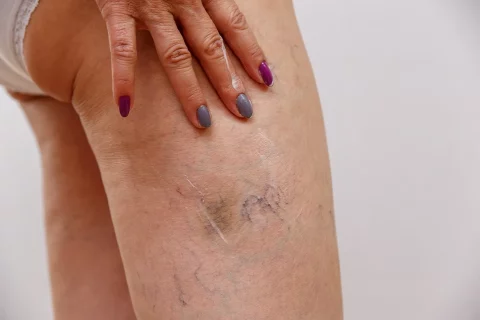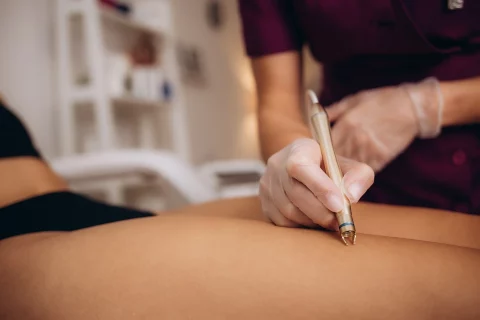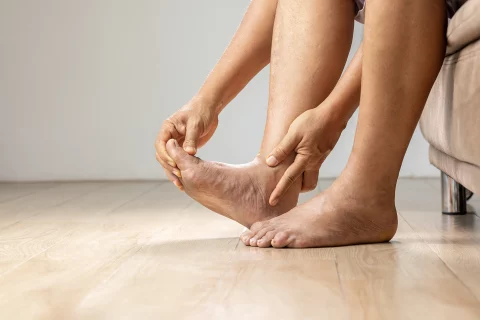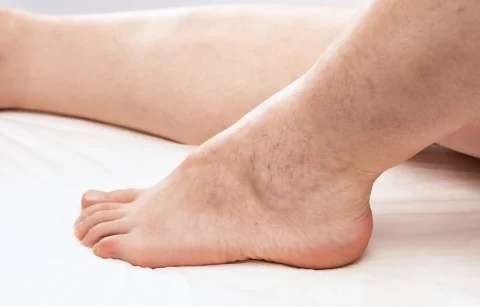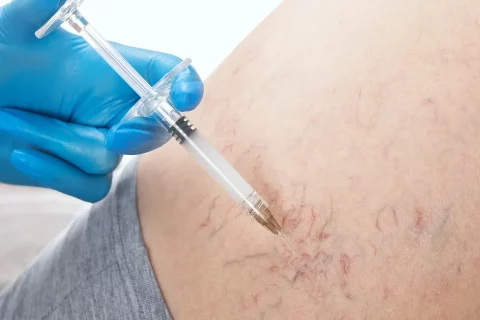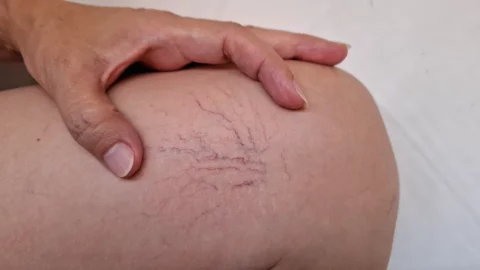Key Causes and Timelines
Spider veins are small, tangled purple, blue or red veins that arise just under the skin’s surface. While harmless, many patients seek treatment to reduce their appearance for cosmetic reasons. But when do these veins actually develop in the first place?
In this comprehensive guide, we’ll overview the various causes of spider veins and timelines of when they commonly first appear, so you can understand the factors that may put you at risk.
We’ll also discuss symptoms, prevention and ideal treatment timing under the guidance of spider vein expert Dr. Rahul Sood.
Genetics and Family History
For up to 50% of patients, genetics plays a major role in spider vein development:
- Having a parent with prominent veins makes you prone as well
- Defective valves in vein walls that don’t close properly are often hereditary
- Clusters of spider veins frequently run in families
Genetic susceptibility means spider veins can show up at earlier ages like during adolescence or your 20’s, rather than later decades. Knowing your family history helps identify if you are predisposed.
Pregnancy Spider Veins
Pregnancy is another common trigger for new spider vein growth:
- Hormone surges loosen vein walls, enabling swelling and dilation
- Uterine pressure on veins in the legs hampers proper drainage
- Blood volume expansion stresses veins and valves
- Spider veins often newly appear during the 2nd and 3rd trimesters
Up to 40% of women first notice spider veins during their initial pregnancy. Changes persist postpartum.
Puberty and Menstruation
Hormonal shifts during puberty and monthly menstruation can also promote spider veins:
- Estrogen, progesterone and prolactin relax vein walls
- Some girls first develop leg spider veins with their first period
- Menstrual cycles continue putting monthly strain on leg veins
Puberty and onset of menses represent common times for hormonal spider veins to arise.
Menopause and Age
Later in life, declining hormones again influence spider vein progression:
- Estrogen drops change vein wall structure, disrupting drainage
- Loss of subcutaneous fat reveals hidden spider veins
- Leg veins worsen with age as valves weaken further
- Many women first notice conspicuous spider veins in their 40’s-50’s
Perimenopause into menopause is a prime time for new spider veins and worsening of existing webs as women age.
Jobs That Require Prolonged Standing
Jobs requiring prolonged standing or sitting contribute to spider veins as well:
- Gravity and poor circulation promote blood pooling in legs
- Pressure builds up in veins, enlarging and twisting them
- Nurses, teachers, retail workers, hair stylists and more get occupational spider veins
- Years of daily stress on leg veins causes gradual damage
People in stationary occupations tend to first observe spider veins in their late 20’s or 30’s as vein strain accumulates. Supportive compression stockings can help deter this.
Weight Gain and Obesity
Carrying excess weight often leads to spider veins by:
- Increased fat and abdominal pressure bears down on leg veins
- Blood volume overload makes veins work harder
- Obesity contributes to poor vein circulation overall
- Spider veins emerge and worsen with moderate to severe weight gain
Noticeable spider veins frequently first develop with weight fluctuations in people’s 20’s and beyond. Losing weight helps prevent more.
Sun Exposure
Years of unprotected sun exposure can bring about spider veins via:
- UV radiation damages the skin, causing inflammation
- Chronic skin irritation weakens vein walls
- Loss of skin elasticity worsens the appearance of veins underneath
- Noticeable sun-related spider veins often first show in people’s 30’s or 40’s after cumulative damage
Always wear sunscreen when outdoors to limit UV-related skin changes that exacerbate veins.
Injuries, Surgery and Trauma
Injuries affecting leg circulation often trigger new spider veins:
- Deep leg bruises, fractures and trauma force vein formation
- Torn ligaments and knee/ankle injuries increase blood pooling
- Surgeries like knee replacement impact flow, irritating veins
- Spider veins around scars often emerge within months after injuries
Staying active and mobile helps minimize spider veins following the short-term immobility of injuries.
Blood Clots
Blood clots can spur new spider vein growth:
- A deep vein thrombosis (DVT) damages the vein wall
- Resulting poor drainage strains small vessels
- New spider veins often branch off of deep veins after a clot
- This occurs within weeks to months following the actual clot
Seek prompt treatment for any suspected DVT to prevent long-term spider vein complications.
When to Begin Preventive Measures

Based on your risks and lifestyle, Dr. Sood may advise beginning preventive spider vein measures:
- During adolescence if you have a strong family predisposition
- Before pregnancy if planning to conceive, to stabilize veins
- Upon starting hormones like birth control or HRT
- With occupations requiring prolonged standing or sitting
- During weight gain episodes or with significant obesity
- If frequently in the sun for work or recreation
- Following injuries requiring immobilization
Take steps to relieve pressure on veins before they become irreparably damaged.
Ideal Timing for Spider Vein Treatment
When considering treatment, optimal timing includes:
- After pregnancy and breastfeeding is complete
- Once excessive weight has been lost and stabilized
- When changing jobs or retiring from standing occupations
- If veins remain troublesome after conservative measures
- If veins are spreading, worsening monthly or becoming painful
- For elimination before major events like weddings or reunions
Scheduling a consultation with Dr. Sood helps formulate the ideal personalized treatment timeline.
Symptom Onset: Don’t Ignore Persistent Pain
Finally, seek medical care promptly if legs feel constantly heavy, painful or uncomfortable. Symptoms like throbbing, cramping, itching and aching could indicate an underlying disorder needing evaluation. Catching issues early prevents complications like leg ulcers.
Let Dr. Sood Formulate a Customized Plan
As you can see, spider veins arise from diverse factors at many life stages. Dr. Sood will conduct a thorough consultation and examination to determine your risks, optimal prevention strategies, appropriate treatment timing if warranted, and ongoing vein care recommendations.
With over 10,000 successful vein procedures performed, he has the experience to halt spider vein progression at any age and provide the relief you deserve. Don’t live with frustration over unsightly veins – call our friendly staff to schedule your appointment today!
FAQs on when spider veins develop:

At what age do spider veins commonly start?
Genetics, family history, gender differences and other factors influence susceptibility. Spider veins may begin in adolescence or the 20’s for some people but later in life for others.
Do pregnancy spider veins go away or get worse over time?
Pregnancy-related spider veins often persist and get worse with future pregnancies and age as veins weaken further. Prompt treatment helps avoid worsening.
How long do occupational spider veins take to develop?
Gradual damage from daily prolonged standing or sitting causes spider veins to newly appear within a few years in most cases.Compression stockings can help slow progression.
Is weight loss enough to get rid of obesity-related spider veins?
Sometimes small new spider veins resolve with significant weight reduction. But weight loss alone cannot reverse years of vein damage from sustained high pressure. Additional treatments are usually still required.
How soon after an injury do spider veins appear?
Trauma-induced spider veins begin showing up in the months following the actual injury as poor circulation and swelling triggers new venous dilation and branching.
When do I need medical evaluation for symptom onset?
Seek evaluation promptly if legs feel persistently heavy, throb, ache or itch. Catching venous insufficiency early prevents complications. Sudden onset thrombosis requires ER attention.
How long after pregnancy should I wait to treat spider veins?
Dr. Sood recommends waiting at least 6 months after pregnancy and breastfeeding completion for spider veins to stabilize before sclerotherapy or other treatments.
When are preventive measures for spider veins useful?
Early prevention helps deter worsening from activities like starting birth control, pursuing high-impact exercise, considering hormone therapy, or entering high vein-risk occupations involving lots of standing.
What factors determine optimal treatment timing?
Ideal timing factors are vein severity, age, pregnancy plans, weight stability, retirement from occupations, conservative option failures, upcoming events, spread/worsening, and intolerable discomfort.
How soon can I schedule a consultation for vein treatment?
You can schedule a spider vein assessment with Dr. Sood at any time. He will examine your specific risks and determine the ideal personalized timeline for preventive care or medical treatments as needed.


